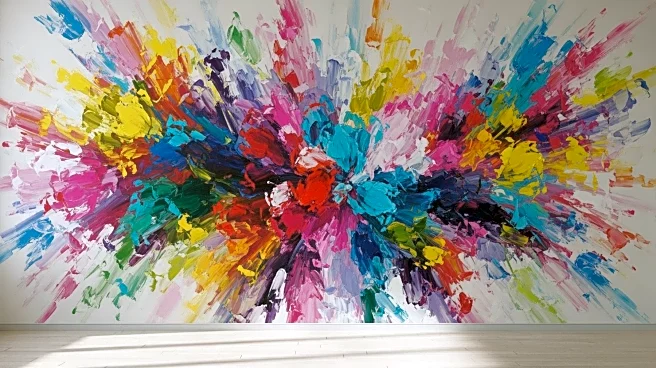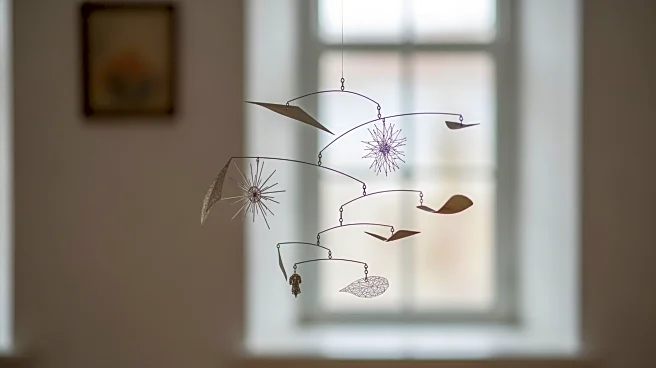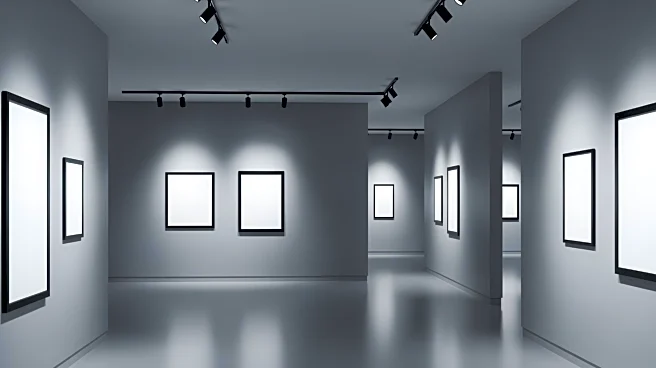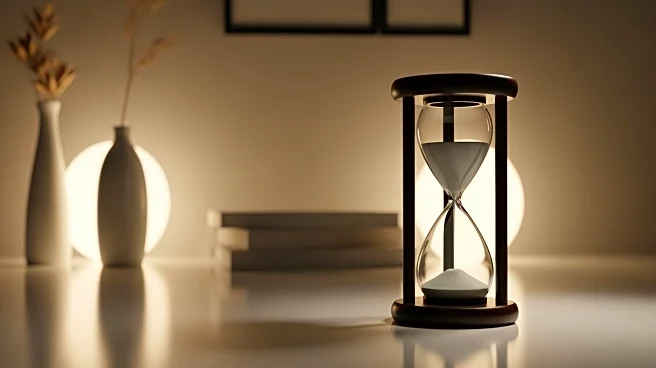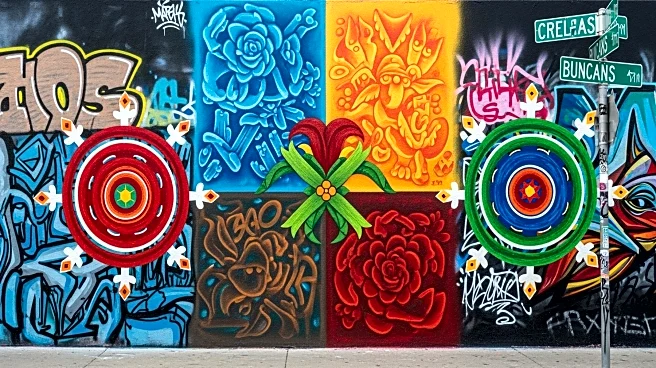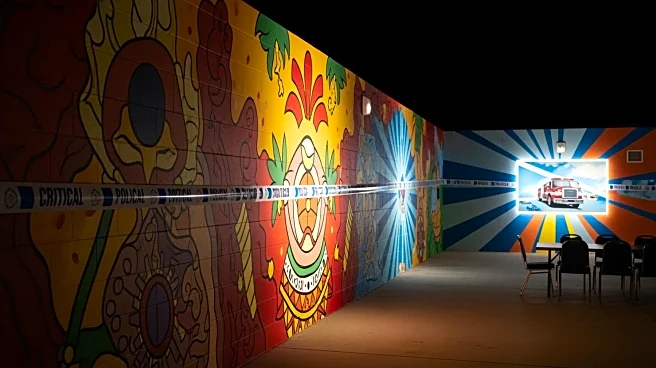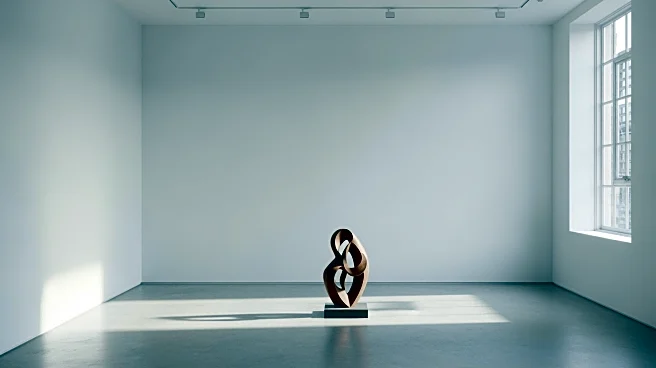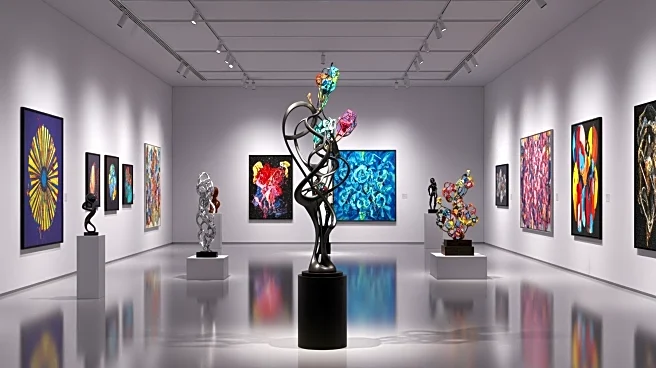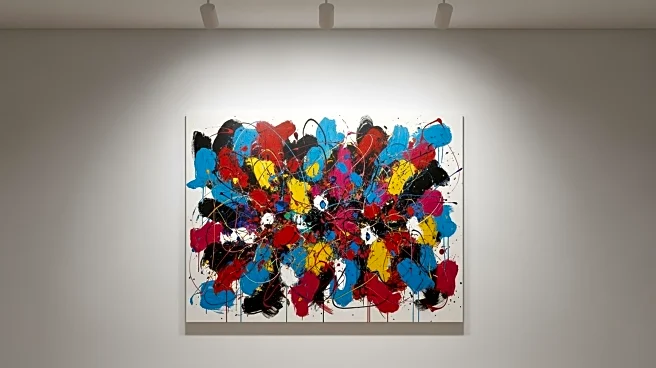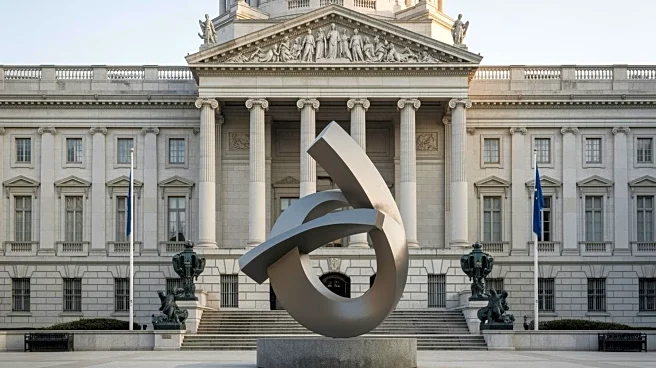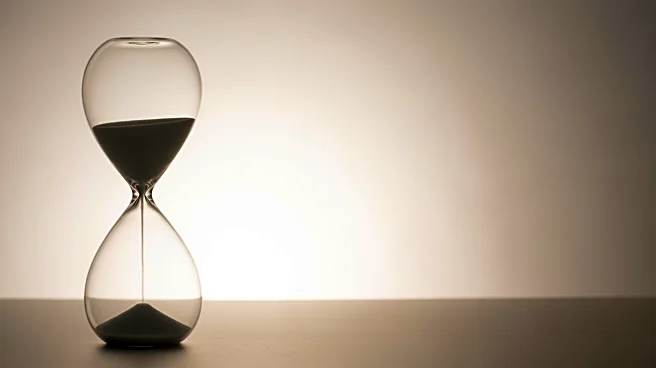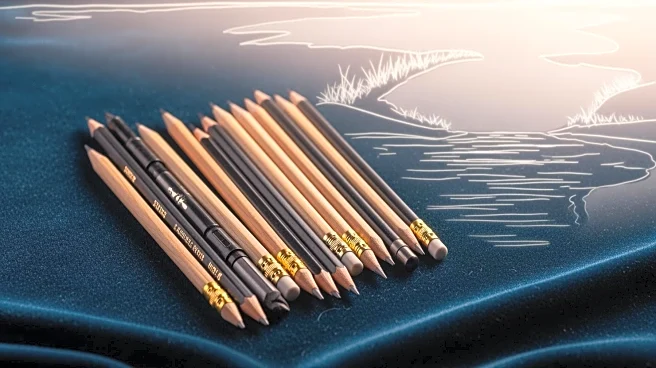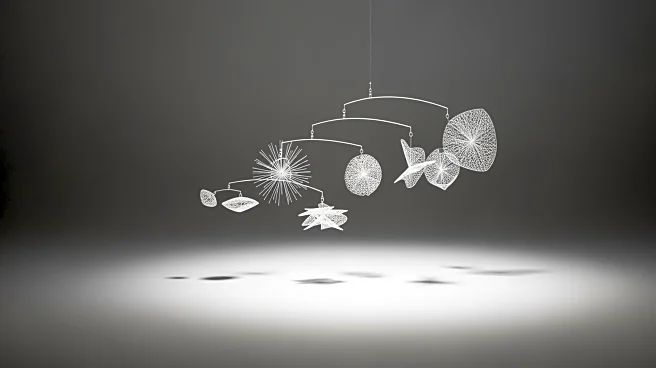What's Happening?
British artist Flora Yukhnovich has unveiled a new site-specific mural at New York's Frick Collection, inspired by François Boucher's Rococo series 'The Four Seasons.' Yukhnovich, known for her blend of abstraction and Rococo influences, has created a panoramic
installation that interacts with the room's architecture, echoing the themes of luxury and seduction found in Boucher's work. The mural is part of a broader Neo-Rococo movement and reflects Yukhnovich's rising prominence in the art world, marked by her successful auction sales and representation by the mega gallery Hauser & Wirth.
Why It's Important?
Yukhnovich's work at the Frick Collection signifies a growing interest in contemporary interpretations of historical art styles, particularly the Rococo period. Her ability to bridge the gap between past and present art forms highlights the enduring influence of historical art on modern creativity. This development is significant for the art market, as it underscores the demand for artists who can reinterpret classic styles in a contemporary context. Yukhnovich's success also reflects broader trends in the art world, where young artists are gaining recognition and commanding high prices at auctions, indicating a shift in collector preferences towards innovative and historically informed art.
What's Next?
Yukhnovich's mural will be on display at the Frick Collection until March 2026, offering visitors a chance to experience her unique blend of abstraction and Rococo influences. Her upcoming debut show with Hauser & Wirth in Los Angeles is highly anticipated and will likely further cement her status as a leading figure in the Neo-Rococo movement. The art world will be watching closely to see how Yukhnovich continues to evolve her style and influence the market, particularly as she engages with new audiences and collectors through her gallery representation and public exhibitions.
Beyond the Headlines
Yukhnovich's work raises questions about the role of historical art in contemporary society and the ways in which artists can engage with the past to comment on present-day issues. Her mural at the Frick, set against the backdrop of rising global wealth inequality, invites reflection on the social and economic contexts that have historically surrounded art patronage and collection. This dialogue between past and present not only enriches the viewer's experience but also challenges the art community to consider the ethical implications of art collection and display in today's world.
